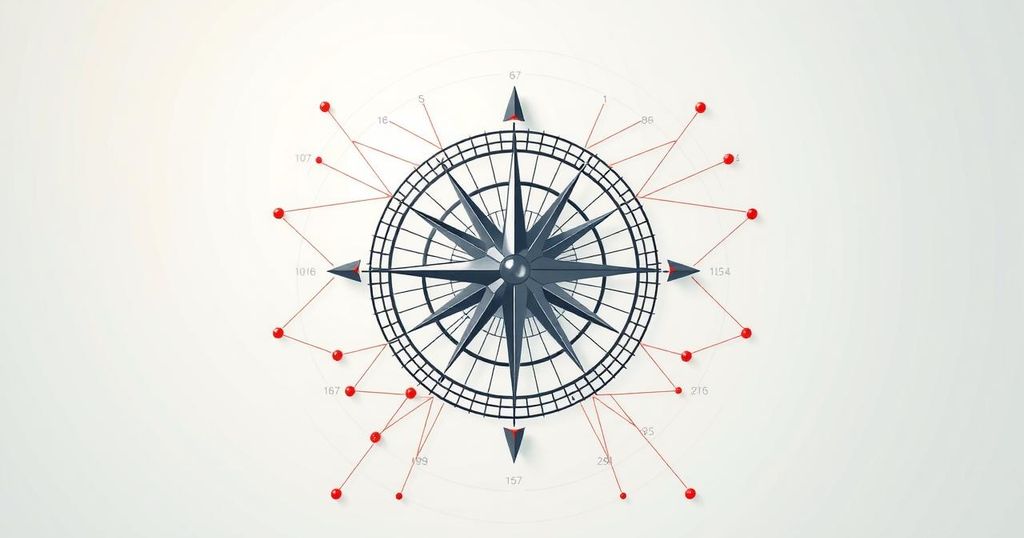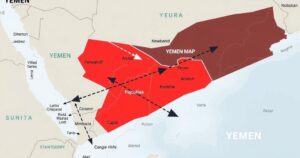Syria’s Interim President Ahmad al-Sharaa Visits Saudi Arabia to Signal Shift in Alliances

Syria’s interim President Ahmad al-Sharaa visited Saudi Arabia on February 2, 2025, marking his first trip abroad. This visit is seen as an attempt to distance Syria from Iran and strengthen ties with Saudi Arabia. Al-Sharaa’s initiative follows a successful military campaign in December through Hayat Tahrir al-Sham, showcasing a shift in alliances and a strategic move to gain international support for Syria’s reconstruction efforts.
On February 2, 2025, Syria’s interim President Ahmad al-Sharaa, accompanied by Foreign Minister Asaad al-Shaibani, made his inaugural trip abroad to Saudi Arabia. This journey is perceived as a strategic maneuver to signal a shift in Damascus’ alliances, distancing itself from Iran as its primary regional supporter. The delegation arrived in Riyadh via a Saudi aircraft, which prominently displayed the Saudi flag.
During this visit, which marks a significant moment for al-Sharaa, his newly adopted tricolor flag flew alongside Saudi Arabia’s at the airport, emphasizing the newfound alignment. Al-Sharaa, also known internationally by his nom de guerre Abu Mohammed al-Golani, is scheduled for discussions with Saudi Crown Prince Mohammed bin Salman. This meeting is crucial, given Saudi Arabia’s previous financial support for groups opposing former President Bashar Assad amidst the ongoing Syrian conflict.
Al-Sharaa’s recent leadership has witnessed the reemergence of his group, Hayat Tahrir al-Sham (HTS), which previously had ties with al-Qaida but has distanced itself following a successful offensive in December. The interim President’s public persona reflects a calculated image aimed at strategic relations with diverse populations in Syria, while maneuvering carefully to limit Iranian and Russian influences within the country. This includes Iran’s halting of operations since failing to reopen its embassy in Damascus.
There is ongoing dialogue between Saudi Arabia and Syria, evident from the recent visit of Saudi Foreign Minister Prince Faisal bin Farhan to Damascus. During his visit, he expressed intentions to assist in lifting sanctions on Syria. Saudi Arabia’s decision to restore ties with Assad in 2023 places them in a pivotal position to foster relationships crucial for Syria’s reconstruction, estimated to cost hundreds of billions following years of conflict.
Simultaneously, Syria’s interim government continues to confront challenges from militant factions, including the Islamic State group. Recent reports indicated a car bomb explosion in the city of Manbij, which resulted in civilian casualties. The turmoil underscores the ongoing instability in the region, particularly as Turkish-backed rebels attempt to assert control over strategically significant areas.
The article discusses the first official trip abroad by Syria’s interim President Ahmad al-Sharaa to Saudi Arabia, signifying a potential realignment of Syria’s regional alliances away from Iran. It provides insights into the historical context of the Syrian conflict, particularly the role of Saudi Arabia in supporting opposition groups during the war and the subsequent geopolitical shifts. The article highlights al-Sharaa’s strategy to gain recognition and support while dealing with the challenges posed by militant groups and the need for rebuilding Syria amidst severe economic sanctions.
In conclusion, Ahmad al-Sharaa’s visit to Saudi Arabia signals a deliberate effort by Syria’s interim government to recalibrate its foreign alliances, particularly as it distances itself from Iranian influence. The discussions with Saudi leaders may be pivotal in lifting the sanctions hampering Syria’s recovery from years of war. As Syria navigates through these complex political landscapes, its government must also address the persistent threats from militant factions.
Original Source: www.thehindu.com








